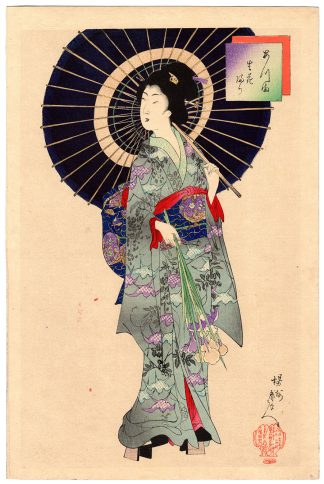Description
Rare sumizuri-e (墨摺絵) monochrome illustration taken from an erotic shunga (春画) book made in 1781 by the famous artist Kitao Masanobu (北尾政演), dedicated to the premonitory dreams of women and entitled “Takarabune” (泰佳郎婦寝), a title that literally means “The Treasure Ship”, but which is written with a complex combination of ideograms that can be translated as “loving couples peacefully lying down”.
The scene depicted is that of a bijin (美人) beauty, asleep in front of a makimono (巻物) scroll, while dreaming of a phallic parody of the sequence “1. Fuji, 2. Hawk, 3. Eggplant” (一富士、二鷹、三茄子) which, according to an ancient tradition, would be the best omen that can be dreamed on the first day of the year. On the left side of the dream, the noble and poet Ariwara no Narihira (在原業平), the Japanese literary archetype of the libertine who seems to have even inspired Murasaki Shikibu (紫式部) in creating the character of of Hikaru Genji (光源氏).
The prints on Japanese washi paper (和紙) show evident signs of aging.








